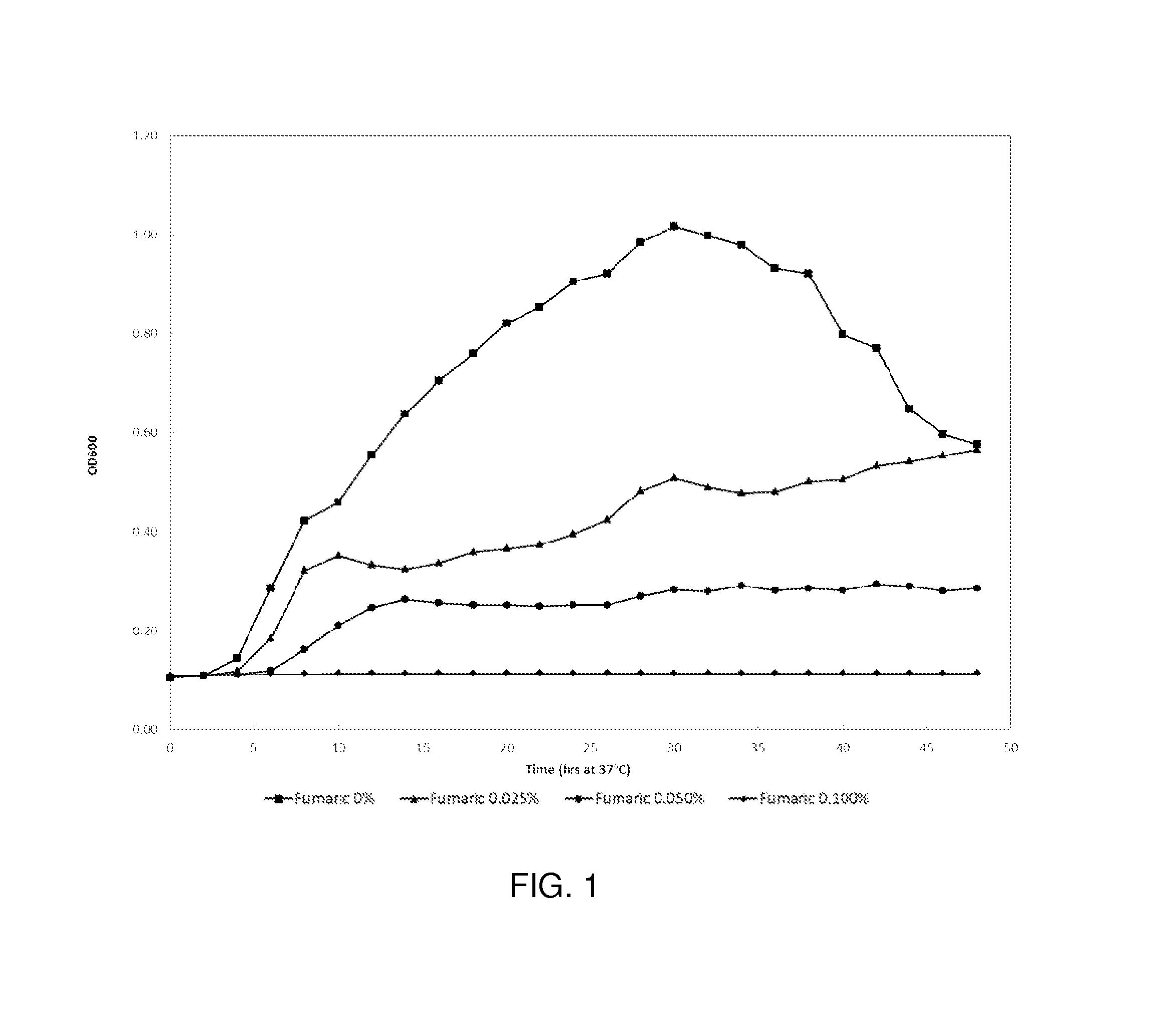Pet Food Palatability with Antimicrobial Properties Based On Organic Acids
- Summary
- Abstract
- Description
- Claims
- Application Information
AI Technical Summary
Benefits of technology
Problems solved by technology
Method used
Image
Examples
example 1
Evaluation of Palatability
[0029]General Approach to Formulation.
[0030]The goal of the original project was to develop a dry cat formula with palatability greater than or equal to the designated benchmark. The formula was to be coated at 1.5% application rate and meet strict cost constraints. Such a formula was developed containing Maillard-reacted liver hydrolysate, dried yeast, 24.5% cornstarch, disodium pyrophosphate which is known in the industry as sodium acid pyrophosphate (SAPP), and 0.5% canola oil, and is referred to herein as Starting Dry Blend. The palatability, expressed as Intake Ratio (IR), of the Starting Dry Blend was favorable (Table 1, Trial No. 203).
TABLE 1Trial Formulas and Measure of PalatabilityTrial No.% Additive in FormulaIRSignificance20324.5% corn starch0.58NS366 14% sodium bisulfate0.36p ≦ 0.001412 33% tartaric acid0.24p ≦ 0.001
[0031]When the project was extended to include study of the antimicrobial properties of added compounds, the formula used in tria...
example 2
Antimicrobial Efficacy Study 1
Phase 1—Demonstration of Fumaric Acid Efficacy Against Salmonella Spp. In Vitro
Scope
[0043]The project objective was to develop a palatant with antimicrobial properties that would protect an animal food from spoiling due to microorganisms and thereby extend the shelf life of the animal food. It is common in the industry to use a challenge test to evaluate the ability of a composition to provide antimicrobial efficacy to a pet food. A list of possible antimicrobials, acids, and combinations thereof, along with pKa was compiled. From the list, the antimicrobials that were readily available and AAFCO-approved were chosen for screening for efficacy against Salmonella in vitro. While many acids were evaluated, only fumaric acid is in this example.
Materials and Methods
[0044]Preparation of Salmonella culture.
[0045]Salmonella enterica subsp. enterica (ATCC® 51741™), was obtained from the American Type Culture Collection (ATCC®) and kept as a frozen stock at −70°...
example 3
Antimicrobial Efficacy Study 2
Efficacy of a Cat Palatant Formulated with 14%, 20% and 27% Fumaric Acid Against Salmonella In Vitro
[0061]In the Phase 3 experiment described below, solutions (15% w / v) of cat palatant samples were challenged with a “Low” concentration (1,000 CFU / ml) and a “High” concentration (1,000,000 CFU / ml) of a liquid Salmonella spp. inoculum in an effort to evaluate the antimicrobial effect of each palatant. Salmonella was enumerated from each palatant at three time points after challenge; immediately, 24 hours and 6 days.
Materials and Methods
[0062]Preparation of Palatant Samples.
[0063]Four samples of a cat palatant formulated with varying levels of fumaric acid (Table 6) were aseptically weighed in duplicate sterile 50 ml conical test tubes. To each test tube, 10 ml of sterile deionized water was added and mixed by vortex. The pH of a 5% (w / v) solution of each palatant was also measured (Table 6).
TABLE 6pH values for cat palatant formulated with fumaric acid.% F...
PUM
 Login to View More
Login to View More Abstract
Description
Claims
Application Information
 Login to View More
Login to View More - R&D
- Intellectual Property
- Life Sciences
- Materials
- Tech Scout
- Unparalleled Data Quality
- Higher Quality Content
- 60% Fewer Hallucinations
Browse by: Latest US Patents, China's latest patents, Technical Efficacy Thesaurus, Application Domain, Technology Topic, Popular Technical Reports.
© 2025 PatSnap. All rights reserved.Legal|Privacy policy|Modern Slavery Act Transparency Statement|Sitemap|About US| Contact US: help@patsnap.com

